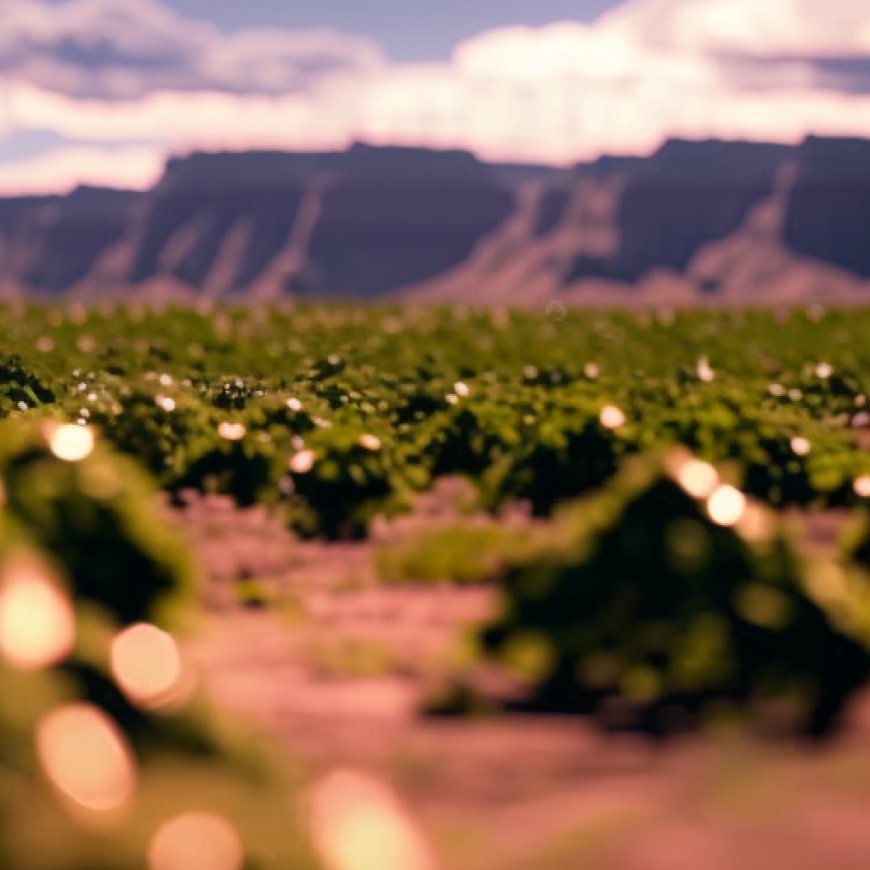Utah lost 20% of its farmland. Will the state try to protect what’s left?


Preserving Utah’s Farmland through Conservation Easements

Heather Limon wanted to keep the family farm.
She had grown up on a 200-acre cattle ranch just 10 minutes from downtown Salt Lake City. When her father died, she and her brother worked to make Cross E Ranch into a viable agri-tourism business. They grow sunflowers and pumpkin patches. Each spring, they hold a baby animal festival.
The people came, but the money didn’t.
“I would keep doing what I’m doing,” Limon said, “but I do have to have it work out financially.” Limon has siblings who also own the land, and her operation doesn’t generate enough cash to buy them out.
Plus, she has four kids and a husband. “I’m working really hard to not make any money,” Limon said.
“I couldn’t keep doing this for very much longer on my own. I’m 55 and it gets harder and harder to irrigate, and then you just don’t have enough money to pay people to do it for you.”
Now, Limon and her family are thinking about selling the 200 acres. It’s hard to imagine that the prime location would still be farmland if they do.
Vanishing Farmland in Utah
(Bethany Baker | The Salt Lake Tribune) Heather Limon, co-owner of Cross E Ranch, walks through the fields during the Sunflower Festival in Salt Lake City on Monday, Sept. 11, 2023.
About 2.7 million acres of Utah farmland vanished in the past six decades. That’s nearly 20% of the agricultural lands in the state, Terry Camp, public policy vice president for the Utah Farm Bureau, told lawmakers Wednesday morning.
But there’s one solution that Camp and Utah Department of Agriculture and Food Land Conservation Program Manager Jeremy Christensen say could help: funding conservation easements.
The Role of Conservation Easements
Farmers are paid to remove certain development rights from their land’s deeds. The lands are still privately owned, but can’t be sold and then turned into subdivisions, used for mining extraction or other types of intensive development.
Camp and Christensen argue that conservation easements are needed as Utah’s population continues to grow. And more people means more development.
“There’s not always a lot of great options for preserving ag lands as development encroaches,” Camp said. “We don’t oppose all development, but we want smart development.”
The loss of agricultural land doesn’t just spell trouble for farmers.
“The loss of privately owned agricultural lands to development is a major threat to our state’s food security,” Camp said, “and often losing ag land results in threats to clean water, loss of wildlife habitat and often recreation opportunities as well.”
Utah currently receives $5 to $6 million each year from the federal government for conservation easements. But Christensen said Utah could unlock millions more if it set aside funds to match federal investment.
Preserving Utah’s Farmland
The Utah Department of Agriculture and Food is requesting that lawmakers set aside $10 to $12 million over the next decade to receive federal funds and work to quickly preserve the last of Utah’s farmland.
“Conservation easements are a vital tool to preserve the prime farmland that we have left to allow for a next generation of farmers and ranchers to have opportunities,” Camp said.
(Leah Hogsten | The Salt Lake Tribune) Young calves are bottle feed by visitors during the Baby Animal Festival and Tulip Field Festival at Cross E Ranch, April 23, 2021. The festival runs until May 8.
However, even lawmakers with agricultural interests were skeptical. “There’s a dark side to conservation easements,” said Rep. Scott Chew, R-Jensen. “We need to proceed cautiously, and we need to look a little bit more broad-minded and try to come up with a Utah solution, rather than jumping on the federal bandwagon.”
Rep. Casey Snider, R-Paradise, agreed that the Legislature should proceed cautiously. But UDAF’s leadership of the effort gave him more confidence. Rather than environmental groups pushing for preservation, Snider said, it would be “the chief agency that deals with agriculture and with our farmers and ranchers being the tip of the spear on conserving farmland.”
The committee did not take any further action on Tuesday.
Limon said she has been interested in conserving the family ranch. “Conservation is a great idea,” Limon said, “but you have to have everyone on board that is handling the land.”
Ultimately, a $20 million offer is going to win out over a $2 million one, even if you do love the land.
“Conservation is actually really complicated,” Limon said. She wishes that wasn’t true.
Source: sltrib.com








